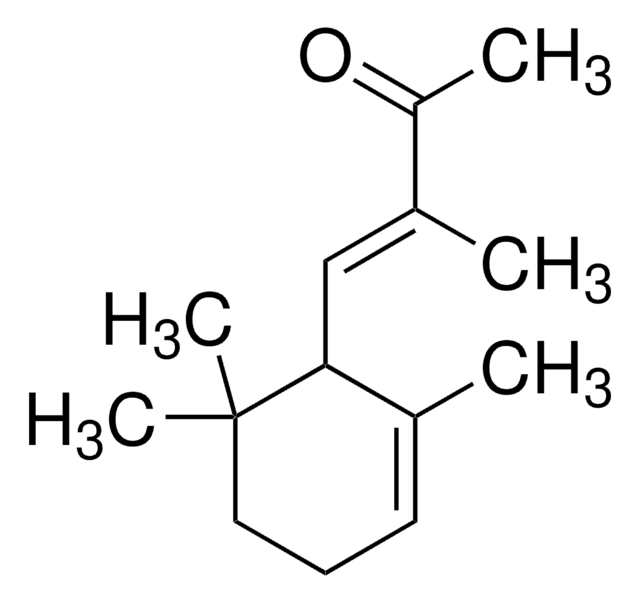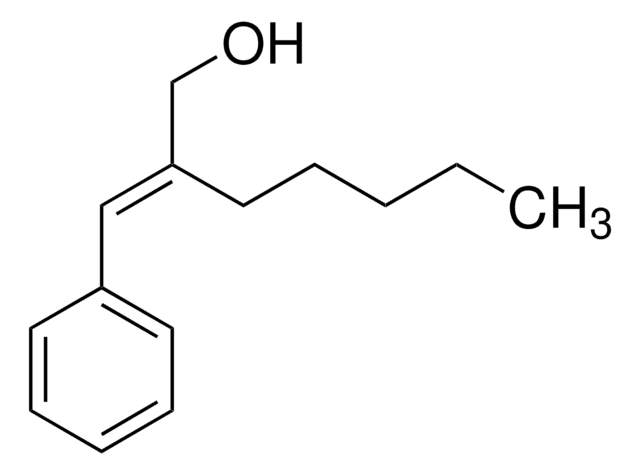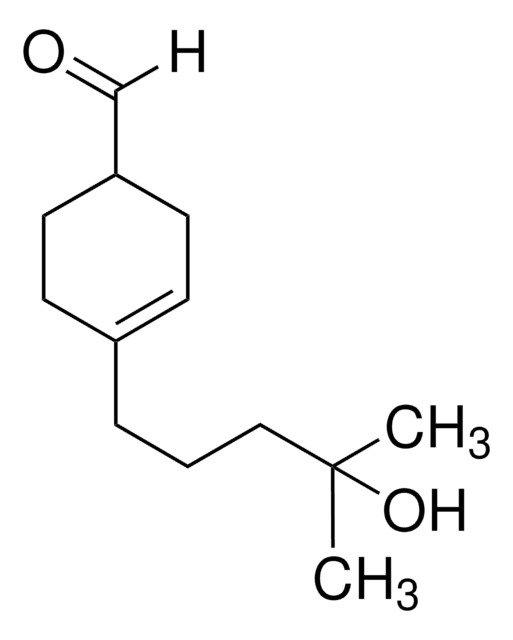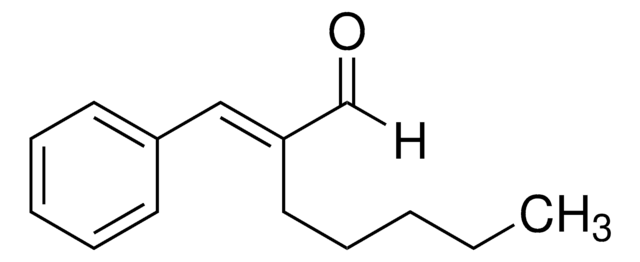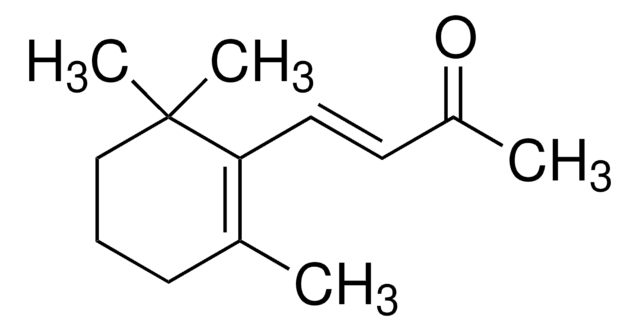93192
α-Cetone
odorant used in allergy studies
Synonyme(s) :
3-Methyl-4-(2,6,6-trimethyl-2-cyclohexen-1-yl)-3-buten-2-one, α-Cetone, Isomethyl-α-ionone
About This Item
Produits recommandés
Qualité
for molecular biology
Niveau de qualité
Forme
liquid
Composition
iso-ɑ-methylionone, ≥85%
iso-β-methylionone, ≤10%
Densité
0.93 g/mL at 20 °C (lit.)
Température de stockage
room temp
Chaîne SMILES
CC(=O)C(\C)=C\C1C(C)=CCCC1(C)C
InChI
1S/C14H22O/c1-10-7-6-8-14(4,5)13(10)9-11(2)12(3)15/h7,9,13H,6,8H2,1-5H3/b11-9+
Clé InChI
JRJBVWJSTHECJK-PKNBQFBNSA-N
Vous recherchez des produits similaires ? Visite Guide de comparaison des produits
Description générale
Application
- contact sensitization studies to identify allergens present in cosmetic preparations
- elucidation of molecular pathways related to allergic reactions
- analytical standard
Mentions de danger
Conseils de prudence
Classification des risques
Aquatic Chronic 2
Code de la classe de stockage
10 - Combustible liquids
Classe de danger pour l'eau (WGK)
WGK 2
Point d'éclair (°F)
230.5 °F - closed cup
Point d'éclair (°C)
110.3 °C - closed cup
Équipement de protection individuelle
Eyeshields, Gloves
Faites votre choix parmi les versions les plus récentes :
Déjà en possession de ce produit ?
Retrouvez la documentation relative aux produits que vous avez récemment achetés dans la Bibliothèque de documents.
Les clients ont également consulté
Notre équipe de scientifiques dispose d'une expérience dans tous les secteurs de la recherche, notamment en sciences de la vie, science des matériaux, synthèse chimique, chromatographie, analyse et dans de nombreux autres domaines..
Contacter notre Service technique